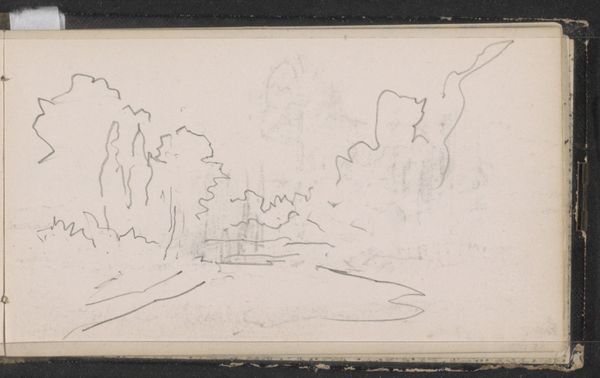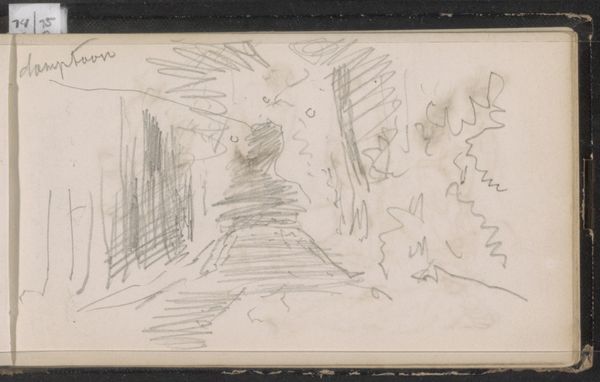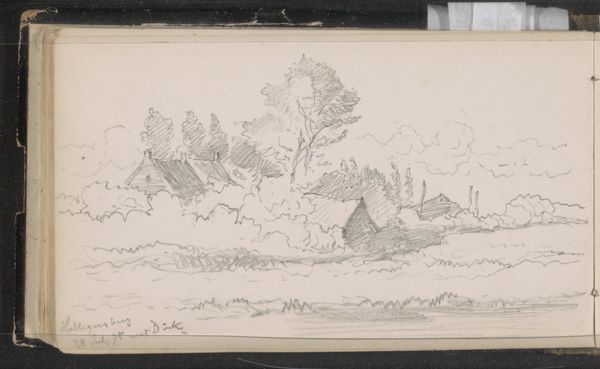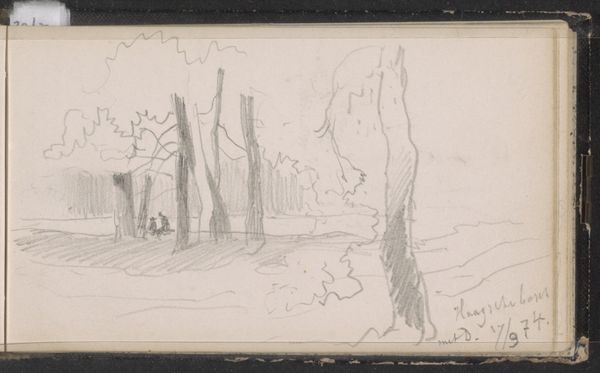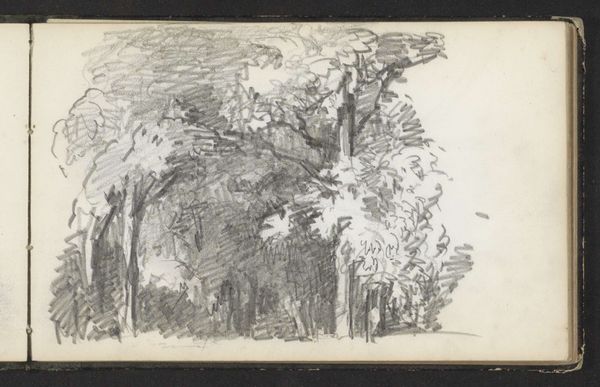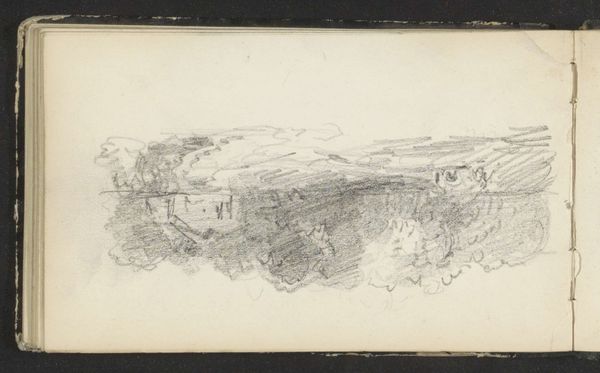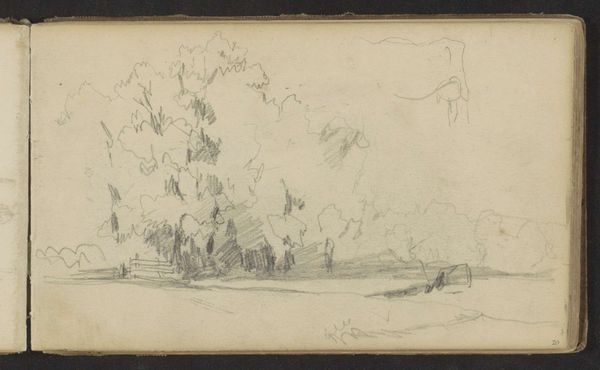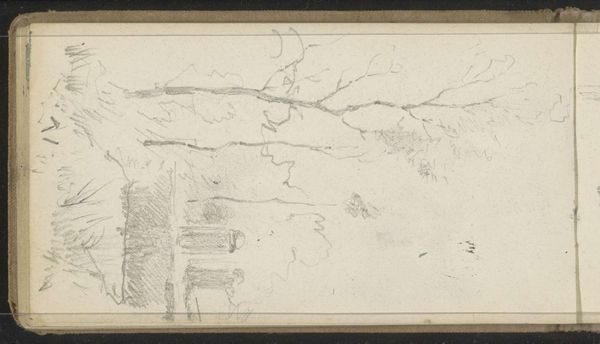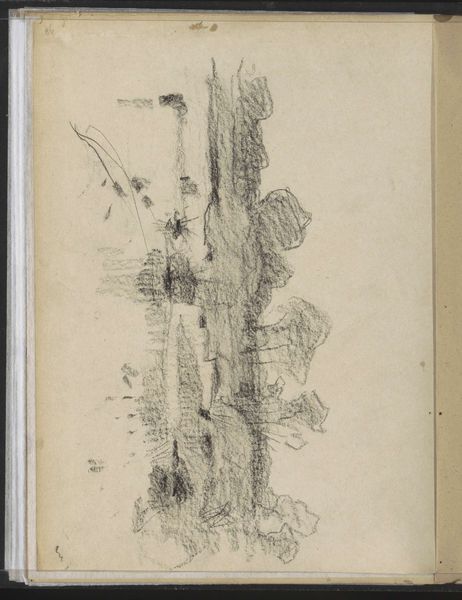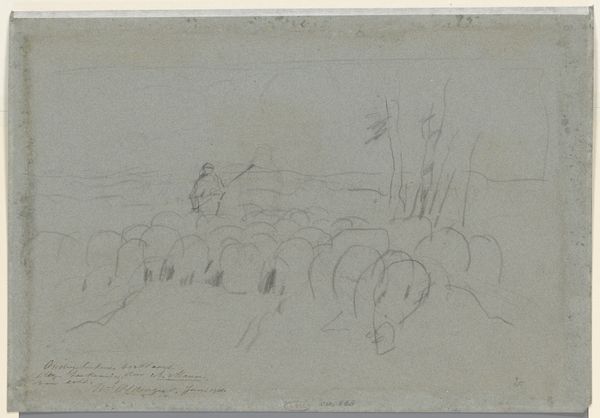
drawing, plein-air, paper, pencil
#
tree
#
drawing
#
impressionism
#
plein-air
#
landscape
#
paper
#
pencil
#
line
Copyright: Rijks Museum: Open Domain
Editor: This is "Landschap bij de Kralingse Veer," a landscape drawing by Johannes Tavenraat, made with pencil on paper in 1874. It feels very immediate, like a quick sketch. What can you tell me about it? Curator: This sketch is fascinating when we consider the materials and labor involved. Tavenraat's choice of pencil and paper signals a specific mode of artistic production: one easily transported and readily available, making plein-air sketching accessible. It raises questions about artistic labor—was this made for sale, for practice, or for personal reflection? Editor: That's interesting, I hadn't thought about it that way. I was mostly looking at the Impressionistic style and the trees. Curator: The so-called "Impressionistic style" also highlights the consumption and commercialization of art at the time. These loose lines were marketable, they became signifiers of "modern" taste. This wasn’t necessarily “high art” displayed at a salon, so let’s ask, where was this made and seen? Editor: Good point. Given the date, I'm guessing industrialization played a role somehow, right? How would industrial advances in material production have affected artists like Tavenraat? Curator: Precisely. The industrial production of paper and pencils broadened access, allowing more artists to engage in sketching as a means of observation and experimentation. Think also about the social context: the rise of a middle class with disposable income, and therefore leisure to engage with artistic endeavors. It suggests how art becomes interwoven with the structures of society, power, and capital. Editor: So, it's not just about the pretty picture, but the system that allows the picture to exist in the first place? Curator: Exactly! It pushes us to see art not as isolated objects, but as products of a specific historical and material reality. It helps uncover labor conditions and material choices. Editor: Wow, I will never look at a simple landscape sketch the same way again! Curator: Precisely the point. This small drawing gives a surprisingly vast insight.
Comments
No comments
Be the first to comment and join the conversation on the ultimate creative platform.
